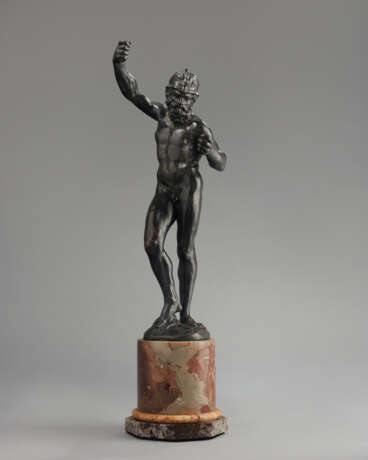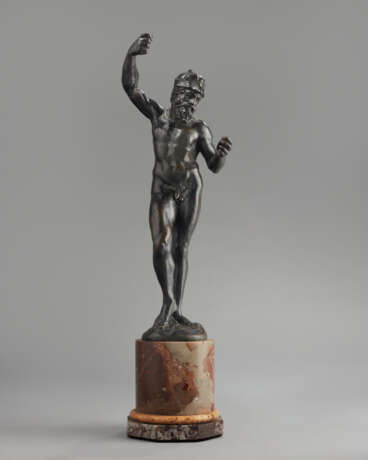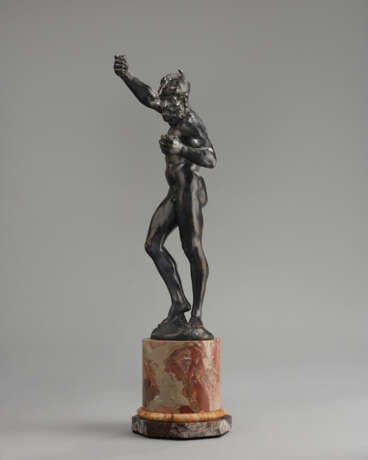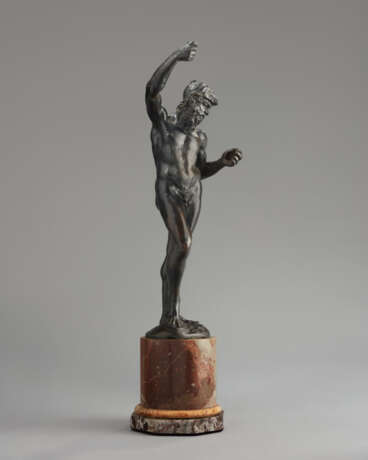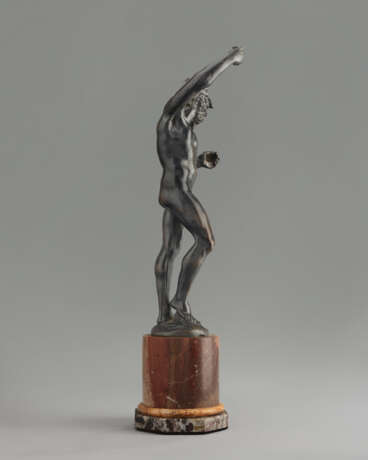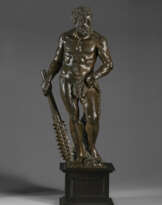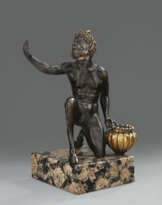CERCLE DE FRANCESCO SEGALA (VENISE 1535-1592), VENISE OU ITALIE DU NORD, FIN DU XVIE OU DÉBUT DU XVIIE SIÈCLE
21.11.2024 16:00UTC +00:00
Classic
Sold
20160EUR € 20 160
| Auctioneer | CHRISTIE'S |
|---|---|
| Event location | United Kingdom, London |
| Buyer Premium | see on Website% |
Archive
The auction is completed. No bids can be placed anymore.

ID 1336071
Lot 21 | CERCLE DE FRANCESCO SEGALA (VENISE 1535-1592), VENISE OU ITALIE DU NORD, FIN DU XVIE OU DÉBUT DU XVIIE SIÈCLE
Estimate value
€ 8 000 – 12 000
Vulcain ou Héphaïstos
bronze, reposant sur un socle postérieur en marbres
H. 27,9 cm (11 in.), H. totale : 38,8 cm (15 ¼ in.)
Provenance
Alfredo Hirsch, Buenos Aires, puis par descendance,
Claudia Quentin.
Exhibited
New York, The Frick Collection, European Bronzes from the Quentin Collection, 28 septembre 2004-2 janvier 2005, pp. 98-101, no. 6.
Further details
A BRONZE FIGURE OF VULCAN OR HEPHAESTUS, CIRCLE OF FRANCESCO SEGALA, VENICE OR NORTHERN ITALY, LATE 16TH OR EARLY 17TH CENTURY
While Vulcan is more usually depicted as an old man holding the attributes of a blacksmith, his Greek predecessor, Hephaestus, may be shown wearing a helmet as in the similar cast in the Victoria & Albert Museum, London (inv. No. A113-1910), in which Vulcan also stands with his weight on his left leg, wearing only a helmet which has a mask on the front. The attribute formerly in his raised right hand is lacking, and there is a round space in the palm of his left fist. It possibly held the "firestone", now missing, but still present in the cast in London.
The cast in the Victoria & Albert Museum is labelled as "after a model by Benvenuto Cellini... Italian (Florence?); about 1550-1575...". However, in European Bronzes from the Quentin Collection, Patricia Wengraf suggests that due to direct comparison and stylistic similarities in the modelling of the body and facial type between Vulcan and Segala's Hercules (op. cit. cat. 4, pp. 82-89), the model was most probably produced in the circle of Francesco Segala.
Please note a scanned copy of the full catalogue entry from the catalogue of the 2004 Quentin Collection exhibition at The Frick Collection, New York, is available upon request.
| Artist: | Francesco Segala (1535 - 1592) |
|---|---|
| Applied technique: | Metalwork |
| Medium: | Bronze |
| Place of origin: | Italy, Europe |
| Auction house category: | Sculptures, Statues & Figures |
| Artist: | Francesco Segala (1535 - 1592) |
|---|---|
| Applied technique: | Metalwork |
| Medium: | Bronze |
| Place of origin: | Italy, Europe |
| Auction house category: | Sculptures, Statues & Figures |
| Address of auction |
CHRISTIE'S 8 King Street, St. James's SW1Y 6QT London United Kingdom | |
|---|---|---|
| Preview |
| |
| Phone | +44 (0)20 7839 9060 | |
| Buyer Premium | see on Website | |
| Conditions of purchase | Conditions of purchase |
